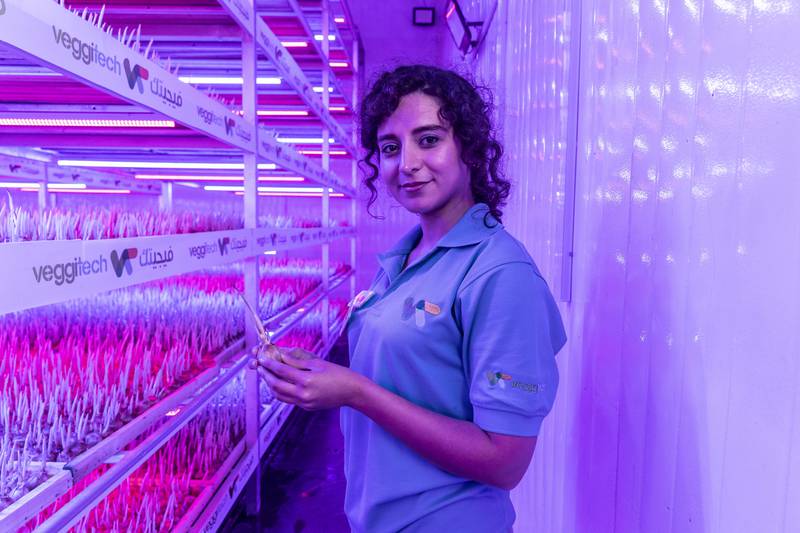About 150,000 crocus sativa bulbs have been cultivated, in a first for the UAE
Without the use of water, soil or fertilisers, vertical fields of “red gold” have been produced in Sharjah as preparations are made for the UAE’s first saffron harvest.
Agricultural technology firm VeggiTech has cultivated roughly 150,000 crocus sativa bulbs from the Netherlands, growing them in vertical farms in Al Zubair.
Saffron is one of the most precious spices in the world because of the extremely labour-intensive process required to cultivate crops.
Each flower produces approximately three tiny stigmas from which the saffron is extracted. This first crop in the UAE grown this way is expected to yield about 5.5 kilograms of saffron.
Depending on the grade and quality, a kilogram of saffron can sell from $850 to $3100.
“This is the first time saffron has been grown this way in the region by using vertical farming,” said Ghazal Shafiee, quality manager at VeggiTech.
“Saffron is an important crop that originates in Iran and it is also grown in parts of Spain.
“It is a sensitive crop to grow and not everyone has the knowledge required to cultivate saffron in this way.
“Using this system, we have much less area required for the entire production.
“Usually, land water and herbicides are used, but by vertical farming a smaller area is needed with greater production and quality.”
Due to water scarcity and climate change, vertical farming is providing an increasing number of crops in the UAE.
The process uses tightly controlled soil techniques with artificial LED lights to stimulate growth, with some farms able to produce 10 times the amount of traditional farming methods.
The technique is particularly useful in the UAE, due to the harsh growing conditions.
As one of the top five buyers of Iranian bulk saffron, developing a home-grown market would make the country less reliant on imports.
VeggiTech cultivates about 50 other crops using similar methods of hydroponics and aquaponics farming at four farms in the UAE.
It takes between nine and 10 months for the saffron bulb to reach maturity, before it is ready to be harvested.
Each purpose-built laboratory is equipped with a special air handling unit to create the precise environment required — with the right CO2, light, temperature and humidity — for saffron to grow.
“We play with the temperature to create the perfect environment for it to grow, with each bulb producing two to three flowers,” said Ms Shafiee, who is from Iran.
“Once the flowers appear, the bulbs are transferred to the greenhouse for the next stage of the crop cycle.
“Saffron can be grown anywhere, but the challenge is creating the perfect environment for it.”

